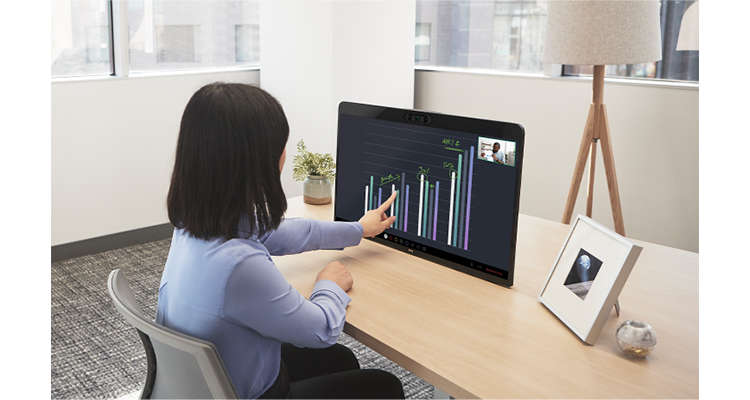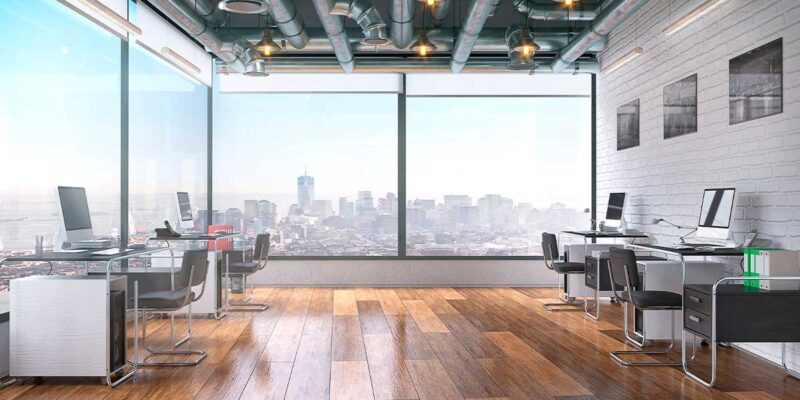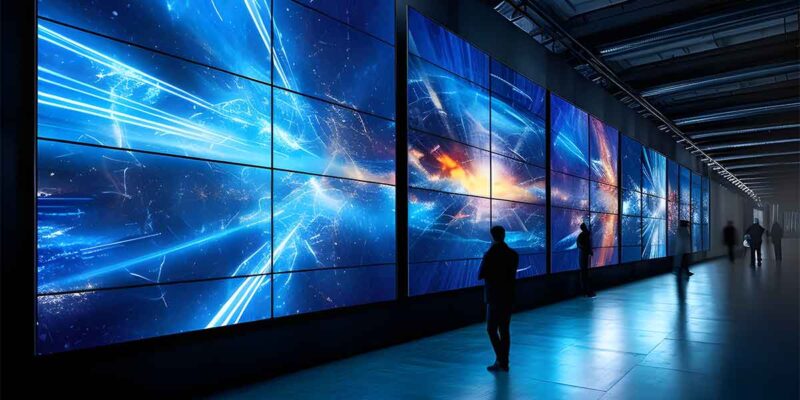The Personalization of AV: Futuresource and rAVe Look Into the Future

By Chris Mcintyre-Brown
Futuresource Consulting
The COVID-19 pandemic has, without a doubt, had an indelible impact on the workplace. It has impacted both the environment and the routines that underpin daily lives globally. Organizations have had to adapt rapidly and radically to survive, deploying digital technology and platforms to keep business moving, as the definition of normal continues to be redefined.
Think back to ten years ago, if the pandemic had struck, many businesses would have struggled to provide the tools to accommodate this rapid acceleration of remote working. The availability of collaborative platforms, software and technologies has been pivotal to connecting employees and businesses globally. These tools have provided the foundations on which companies can build sustained commercial success.
COVID-19 and Sustainability
This COVID-19 locational reshuffle has certainly blown away barriers and dispelled assumptions about working from home, or the absolute necessity of face-to-face meetings, business travel and trade shows. The impact of COVID-19 has created an unprecedented disruptive situation, motivating strategic change, which could drive sustainability and innovation, both culturally and technologically. Ironically, people have become more connected than ever before and are highly receptive to the emerging dynamics of the new sphere of the virtual workplace.
Beyond the Wuhan shake, the redesigning of workspaces, one-way worker traffic flow and the “six-feet-apart” office, which are all designed to help minimize a second wave of infection, industry leaders are already considering long-term alterations to working practices. In particular, the CEO of Barclays recently suggested that big offices could soon become a thing of the past. What’s more, businesses that previously committed to long-term leases may now look to reduce and repurpose post-COVID-19. A greater societal change is also likely to emerge, including the delocalization of the workforce and household mobility, perhaps slowing down the trend of people and families moving from rural to urban areas to secure the best jobs.
Meanwhile, COVID-19 has demonstrated positive benefits by inadvertently creating conditions for the world’s most extensive climate change study — something that otherwise would have been impossible. It has illustrated the sustained environmental gains that society can expect from reduced travel. With less demand placed upon fossil fuels, alongside the corresponding improvements in air quality and reduced congestion across our cities, the benefits are clear. This is likely to accelerate the trend towards more dynamic and fluid working practices, which will inevitably influence how workplaces are designed, operated and managed.
Businesses have been allowed to consider further the connections between people, planet and profits in a world of finite resources. COVID-19 has provided a chance to reshape the corporate universe in a way that promotes sustainability more than ever before while ensuring that profits are maximized within corporate social responsibility. Sustainability and profit can work hand in hand, as pointed out by Lisa Jackson, vice president of environment, policy and social initiatives for Apple, who recently stated that “the easiest and most fun part of sustainability is when you can go to the business — as we have done now several times — and say, ‘It will save you money to reduce the amount of scrap metal that is produced. It will save you money to think about packaging in a different way”. The future will bring a combination of systems, process and lateral thinking that will allow businesses to move forward in ways that can be of benefit to all. For some, the recent environmental gains have already started filtering through into longer-term ecological and profit-boosting initiatives.
The workforce of tomorrow is likely to seek increasingly flexible workspaces that strike a balance between conviviality and privacy, enabling creativity to thrive in work environments attuned to their needs. Acres of meeting rooms look set to be reconfigured, implementing more collaborative spaces, with smart office buildings comprised of both physical and virtual workspaces like Microsoft Teams. Digital technologies lie at the heart of this transformation, with machine learning, AI and mixed reality combining to allow workers to quickly toggle between locations and time zones and harness the collective thinking of remote colleagues. This enhanced way of working will help to identify, visualize and solve many of the complex business, social and engineering challenges to be faced over the next decade.
COVID-19 has accelerated a change that was already happening. Workforces are more mobile than ever before due to the introduction of communications technologies such as fiber broadband and 5G mobile. Conversely, companies are now forced into reconsidering their space requirements, exploring alternatives to traditional rows of desks, including more collaborative meeting spaces and huddle rooms. The smart buildings industry looks set to capitalize upon this dramatic shift in thinking.
Accelerated Collaboration Trends
Pre-COVID-19, many collaborative technologies were already increasing, with videoconferencing and wireless presentation solutions being extensively used in the day-to-day corporate environment.
This is evident in the Futuresource Video Conferencing Hardware Report, in which corporate end users demonstrated a year-on-year growth of 28% in volume and 9% in value in 2019. Furthermore, the wireless presentation solutions category grew 35% in volume and 33% in value in 2019. This was reinforced further by findings from the Futuresource Enterprise End User report where 69% of end users across the U.S., France, Germany and the U.K. stated that their videoconferencing increased in 2019, before COVID-19. These markets and associated categories will undoubtedly grow exponentially.
A Focus on Personalization
Futuresource Consulting has been tracking the dynamics of the ProAV enterprise sector for over 30 years. Even before entering the new normal phase, the shift toward workplace personalization was already in motion — 70% of the workforce were working from home occasionally (three days or more), while recipients joining meetings via remote technology had risen by 52% at the end of 2019. These trends fall in line with the growing workforce of digital natives, demanding fluidity and setting expectations for how to incorporate technology into the work environment.
Firms operating across the ProAV space need to innovate and power forward as the market has suddenly grown exponentially; a simple pivot might not be enough. A concerted land grab is being made to capture the hearts and minds of the corporate end user. Moving forward, we should expect to see further investment in software platforms for collaborative working and a drive for more BYOM (Bring Your Own Meetings), as personal devices are used increasingly for remote meeting participation.
Interoperability will remain a key focus for businesses, with ease of use connecting tablets, phones and microphones to broader audiovisual systems becoming a necessity, along with voice and presence-based UI. Workplace design will begin to address the personal needs of the employee on an individual level, with cognitive spaces and smart initiatives established to boost mental well-being and productivity levels. View the latest infographic here for a full picture of the changing landscape.




